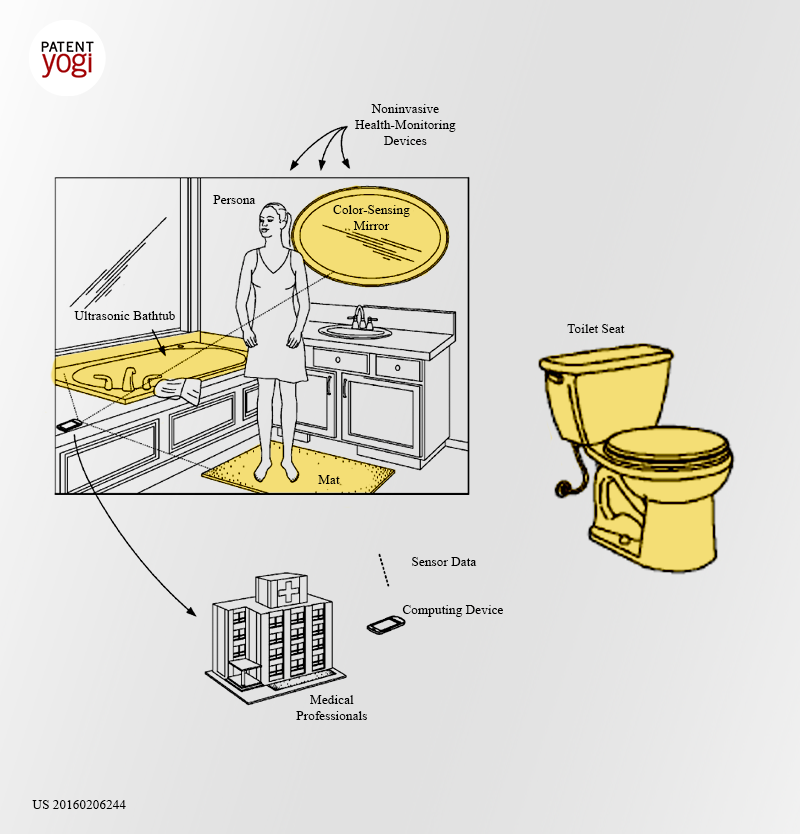A new patent application from Google indicates that Google is envisioning a big change in our lives. They plan to make many household items/units “health conscious”.

Specifically, they plan to embed various noninvasive health-monitoring devices in bathrooms. This includes a pressure and electrical-sensing mat, a color-sensing bathroom mirror, an ultrasonic bathtub, a pressure-sensing toilet seat, and radar-field device. Some of these devices, while being noninvasive, actively sense the patient’s health, such as through sending out sound waves (e.g., ultrasonic bathtub), electromagnetic waves, electrical signals, and millimeter and similar radiation (e.g., radar-field device). Further, some devices are fully passive, such as sensing blood pressure of a person through toilet. The sensed data may be sent to health professionals.
Overall, Google is planning to employ a sensing milieu in everyday settings like a person’s bathroom. Through a combination of various sensing modalities, the system is capable of determining a functional state of a human physiological system, such as a cardiovascular system. This sensing milieu is capable of determining the functional state, or trends in the functional state, without using invasive tests. This sensing milieu senses various conditions of the person, which can then be correlated, aggregated to determine the functional state of that physiological system. While the above examples address the cardiovascular system, other physiological systems may also be sensed, including the nervous, endocrine, muscular, skeletal, and integumentary systems.
For example, sensor data indicating that a person’s walking gate is irregular and that the person’s spine includes various subluxations, can be analyzed to find a functional state for a skeletal system indicating that the person’s left knee has a reduced range of movement.
Another example – sensor data may indicate a person’s blood pressure at a particular instance in time. This blood pressure alone, however, is unlikely to be sufficient to determine a current health unless that blood pressure is within extreme ranges for human cardiovascular systems. This blood pressure cannot on its own show a trend. Blood pressure can indicate a functional state of a cardiovascular system when analyzed over time, however. Assume that blood pressure is measured over a week. These blood pressures can be normalized based on corresponding heart rates and activities in which the blood pressure were measured, such as a heart rate of 130 beats per minute for one blood pressure reading and being in a deep sleep for another blood pressure reading. By analyzing and correlating blood pressure readings with other readings and over some period of time, a functional state determined based on blood pressure can be found.
Google has been consistently working in health domain since long. We know of some moonshot projects from Google like Google lens which can help people suffering from diabetes to monitor sugar levels easily. However, the idea to wear electronic lens in the eyes is quite unsettling for many potential users
Check the video below to see how Google lens work.
Publication number: US 20160206244
Patent Title: Noninvasive Determination of Cardiac Health and Other Functional States and Trends for Human Physiological Systems
Publication date: 21 Jul 2016
Filing date: 19 Jan 2015
Inventors: Jeffrey L. Rogers;
Original Assignee: Google, Inc.
